Buying a winter jacket or a coat doesn’t have to be a daunting task. There are many different types and styles of coats to choose from. Once you know what to look for, the process becomes a lot easier.
We are not going to talk about the trendiest jackets this season, or how to freeze for fashion. Fashion is going to have to take a back seat to overall warmth and functionality.
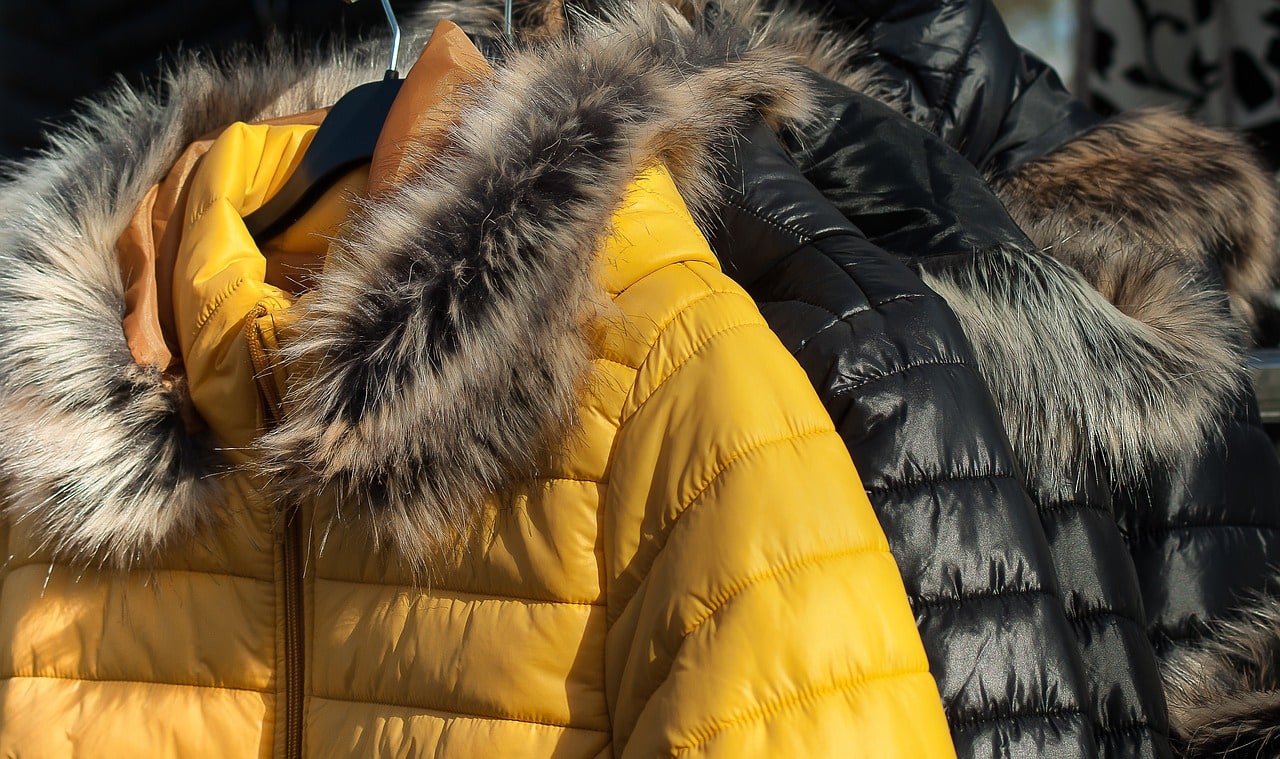
Types of Warm Winter Jackets
These days you can see a wide variety of styles and variations in jackets, but which one you choose depends in many factors, including outside temperature and your activity level. We made a short overview of main type of winter jackets, with their individual strengths and weaknesses.
1. Puffer jacket
Puffy coats and jackets are very on trend this season, but that is not the reason that they ended up on our list. Puffer jackets get their name from the pattern of stitched sections filled with insulation that gives it the “puffy” look. Depending on the quality, density and loft of insulation, synthetic or not, a puffer jacket can range in bulkiness. Down filled puffer jackets are pretty expensive too.
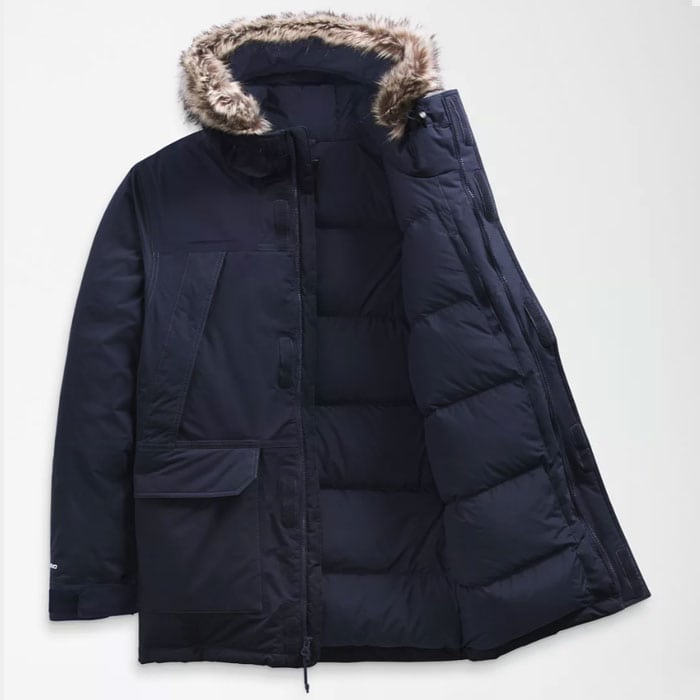
Good example of a toasty, but not overly bulky down jacket is The North Face McMurdo jacket.
The inside is made of recycled polyester, and there is a zipper pocket on the left hand side. The side pockets are lined with soft felt, which not only keeps your hand warm, but also feels great when you don’t have your gloves on.
Hood is adjustable, you can pull it back when you need to, but will keep wind out of your ears. It features a removable fur trim, but when the wind is stronger, you can feel it getting through the holes between buttons.
2. Parka
Another type of winter jacket is a parka. It is a long, hooded coat that is often lined with fur or faux fur. They usually have a removable lining, so you can adjust it for warmth depending on what you’re doing and where you are going. A parka is worn in extreme cold to protect the wearer from high winds, heavy snow, or rain.
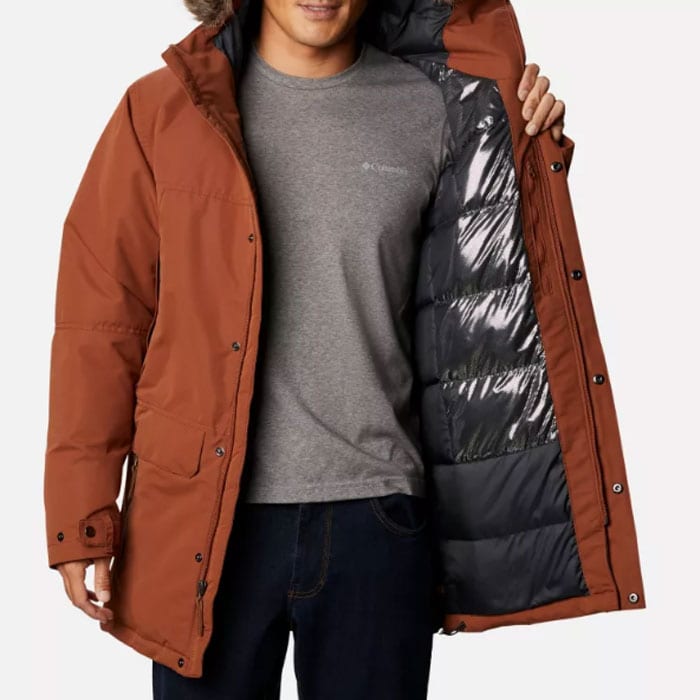
Columbia South Canyon Long Down Parka is a perfect match of a classic fit with technology to keep you warm and dry. From rain to snow, to assaulting winds or bitter cold this model can keep you well protected. It features Omni-Heat thermal reflective technology and a waterproof, breathable fabric. The outer shell is 100% nylon Legacy Twill and the inner shell is 100% recycled polyester microfleece.
3. Snowboard or ski jacket
If you are going to engage in winter sports such as skiing or snowboarding, you will need a specialized jacket. Ski jackets and snowboard jackets are typically designed to be waterproof and insulated. They also have features that make it easier to move, such as articulated elbows, which help with movement while you’re on the slopes.
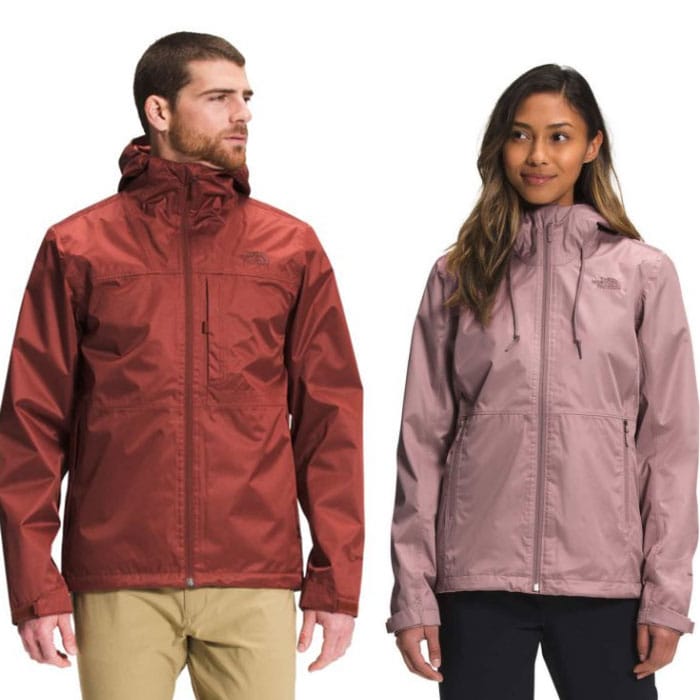
The North Face Clement Triclimate jacket is a perfect example of functionality meeting style. This jacket has 100% windproof fabric and waterproof, breathable, seam-sealed DryVent™ 2L shell to keep you dry in the wettest conditions. The inner lining is 210 g/m2 fleece so your body heat will stay in.
4. Winter jacket for active use
If you are going to be very active outside in the winter, such as hiking or cross-country skiing, you need a different type of jacket than someone who is just going to be walking around town. You need something that will keep you warm and dry while you’re active, but that isn’t too bulky or heavy.
Columbia Autumn Park is a great example of a winter jacket that is designed for active use. It’s made of lightweight nylon fabric with a durable water repellent finish. The insulation is 650-fill down, which provides good warmth without being too heavy. And it has plenty of pockets, so you can keep your hands and gear warm and dry.
5. 3-in-1 jacket
The 3 in 1 is the classic year-round outdoor garment. It’s basically two jackets – a fleece inner, or a thin synthetic insulating liner, and a waterproof shell outer – and offers versatility and value-for-money as you have 3 wear options:
- The liner on cool dry days.
- The shell when it’s wet and mild.
- The two combined for maximum winter warmth and waterproof protection.
Worn with a base layer underneath, it’s also the full layering system in one, allowing you to trap warmth between the layers and still allow moisture to escape, keeping you warm and dry as you hike. You can also add or peel off the layers as the weather dictates, equipping you for any conditions you might encounter.
A great example is the Columbia Tunnel Falls Interchange Jacket.
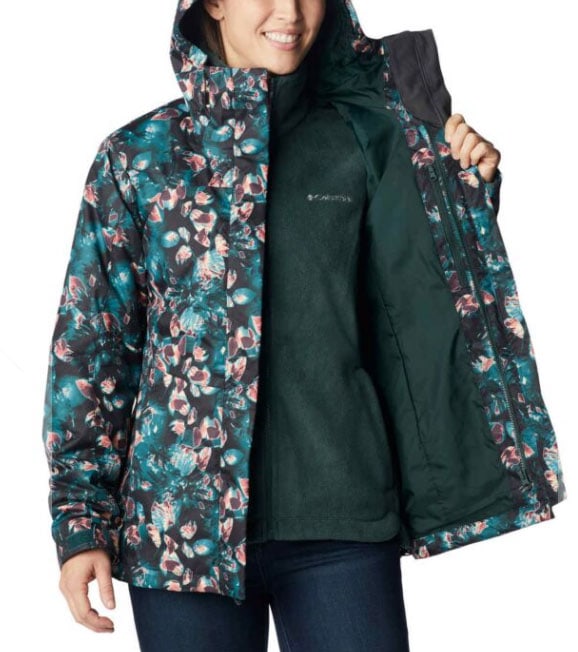
6. Windbreaker
A windbreaker is a type of jacket that is designed to resist the wind and is typically made of nylon or polyester. You can find them sporting a number of different features, including a fleece-lined hood, a full-zip front, and side pockets.
Windbreakers are perfect for activities such as running, cycling, or hiking, as they help to keep you warm and protected from the cold air. They are also great for layering, as they can be worn over a shirt or under a coat.
7. Heated jacket
If you live in a cold climate, or if you just tend to get cold easily, you might want to consider a heated jacket. This is a jacket that has been outfitted with heating elements that will keep you warm and toasty all winter long.
There are a number of different models on the market, but typically they charge up via a USB port and then keep you warm for a number of hours. They are typically lightweight and slim, so they won’t take up too much space in your wardrobe.
Alternatively, you can get a heated vest to wear under your jacket. The Fieldsheer Mobile Warming Peak BT is a perfect example of a versatile heated vest. It has a lightweight, breathable design and uses Bluetooth technology to control the heat. It can be worn under any jacket and will keep you warm for up to six hours.
What to Look for in a Winter Jacket
Regardless of the type of jacket you choose, there are a few important features that you should look out for in any style.
Insulation
If the two main types of insulation are down and synthetic but is one superior to the other? The simple answer is, they’re both great and will both keep you warm, but one may excel over the other in certain cases.
Down is the warmest, lightest, and most compressible type of insulation. Down jackets usually have a Fill Power rating, ranging from 400 to 900. The fill power describes the quality of the down, not the amount, and the higher it is the more expensive the jacket is. If you have the budget, it is good to get a high fill power, but it is not the only insulation factor. As long as you are 550 and above, you are good to go.
Another metric to look for in down jackets is a down-to-feather ratio. This is the percentage of down and the percentage of feathers in the product. The numbers are generally 70/30, 80/20, or 90/10. High-quality down jackets should have a ratio of at least 80/20, which means 80% down to 20% feather.
While a down jacket will keep you warm in very cold temperatures, it becomes almost useless if it gets wet. And we are not only talking about the outside conditions but also about moisture that comes from your body, because down traps the sweat if you get too warm. That is why these jackets are great for casual winter wear, even in extreme cold, but for active and wet conditions, you might want to consider synthetic. Jackets with down insulation need extra care while washing.
Synthetic insulation is heavier and not quite as lofty but does a superior job at insulating when wet. It’s also cheaper than down, which is why you’ll find it inside some of the budget-oriented work jackets like the Columbia Utilizer jacket.
Waterproofness
Moisture is usually not an issue for jackets with a thicker waterproof shell, but lighter jackets might need some additional protection. A lot of super-light down jackets lack good waterproofing, so you need to look for products that have been treated with DWR, or Durable Water Repellent. This may be applied to the shell of the jacket, but it’s best to look for the product where down itself is treated. The waterproof coating tends to wear off and occasionally you will need to reapply it.
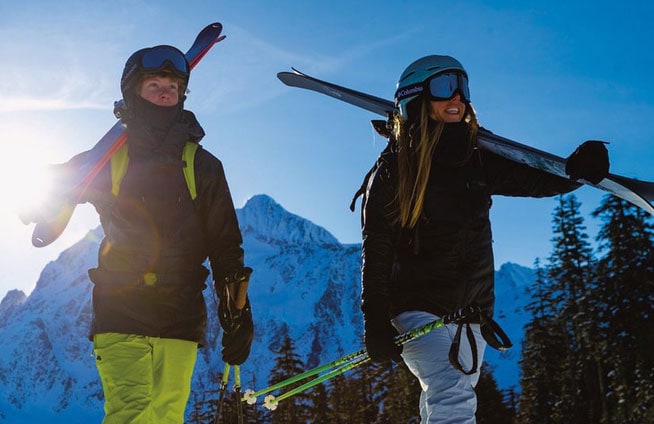
Heat retention
In the past the general rule was the thicker the jacket, the warmer it is. While this still stands to a degree, there are some impressive-performing thin synthetic, such as Thinsulate. These are best for moderate activity, not sub-zero temperatures. For maximum heat retention though, you need to go for a puffer jacket, the bigger the better. You will look like a walking marshmallow, but you will be comfortable in freezing cold weather.
For active though, the jacket should be highly breathable. Nothing leads to hypothermia faster than the combination of trapped sweat and frigid conditions.
Hood
Much heat gets lost by an uncovered head, so make sure the coat or a jacket has a functional hood. Always buy one with a hood that contains the same thickness of insulation material the rest of the coat has. Also, make sure it is designed to allow cinching it down over most of your face – down to your eyebrows, and from the neck up to over your chin. If you pair it up with a lightweight balaclava head covering you’ll be good to go.
Closure
Almost all winter jackets have a zipper closure. A double zipper allows you to unzip from the bottom to allow for more leg movement in longer jackets. In addition to zipper, there are buttons, snaps or Velcro.
Pockets
Most jackets have pockets, but the higher-end ones have more and better-placed pockets. Look for a jacket with at least two chest pockets (that can hold a lot), side pockets, and an inside pocket. The last one is great for holding your phone or MP3 player to keep your hands warm.
Jacket Length
The longer the jacket the better it will protect your back and bum from the cold and wind, but at the same time, it will be heavier and reduce your range of motion. Therefore, you need to find the right balance for your needs.
Adjustments
A well-fitting jacket is a key to your comfort. A good thing to have is some sort of elastic drawcords or cinchers on the hood, wrists and waist, to keep the wind out.
Vents
Though found primarily on rain jackets, a few insulated jackets also include underarm vents and/or core vents that are handy when your exertion level rises. You’ll find vents more often when a jacket has a waterproof/breathable shell.
Other things to consider
Activity level
If you are very active, look for a jacket that is designed for that activity, such as skiing, snowboarding, or mountaineering. These have features like vents, waterproof and breathable shells, and insulation that is tailored for the activity.
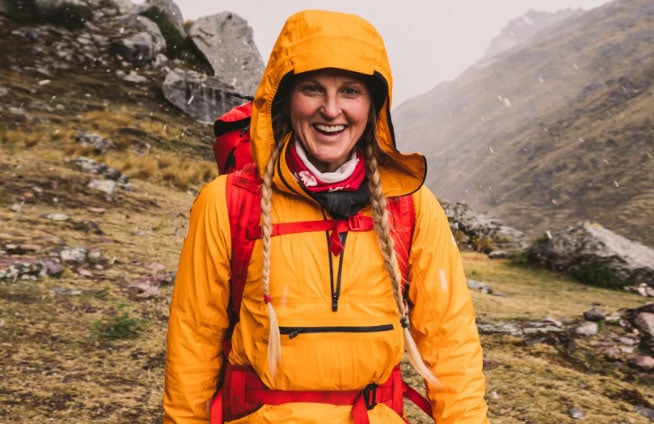
Style
Winter jackets come in a variety of styles, from the more utilitarian to the super-stylish. Whether this is a deciding factor for you or not, almost everyone prefers a jacket that looks good.
Climate
The climate you live in will also dictate the type of jacket you buy. For example, people who live in warmer climates don’t need to buy as heavy of a jacket as those who live in cold climates.
Layering system
If you are going to buy more than one jacket, look for a system where the different jackets can be zipped or snapped together. This will create one big jacket that will keep you warm in the coldest weather.
To try to sum things up, if you want to find a good fit, when trying on a jacket make sure to:
- Check the arm length. They should be just long enough to cover your wrists when your arms are hanging by your sides.
- Make sure the hood fits comfortably over your head and that you can tighten it down so that it covers your ears.
- Zipper the jacket up all the way and see if it’s comfortable. The jacket shouldn’t be too tight or too loose.
- Make sure the jacket has enough pockets. You’ll want at least two chest pockets, two side pockets, and an inside pocket.
- Check the length of the jacket. It should be long enough to cover your bum and back.
- See if the jacket has any adjustments, like elastic drawstrings or cinchers, on the hood, waist, and wrists.
- Make sure the jacket has vents, especially if you are active.
- Check the style of the jacket. You might not care, but others might.
- Check the climate you live in to see what type of jacket is best.
- See if the jacket can be layered with other jackets. This will create one big jacket that will keep you warm in the coldest weather.
Now that you know what to look for when buying a winter jacket, it will be easier to find the perfect fit for you. Just remember to keep all of these things in mind and you’ll be sure to find the right jacket for your needs.
